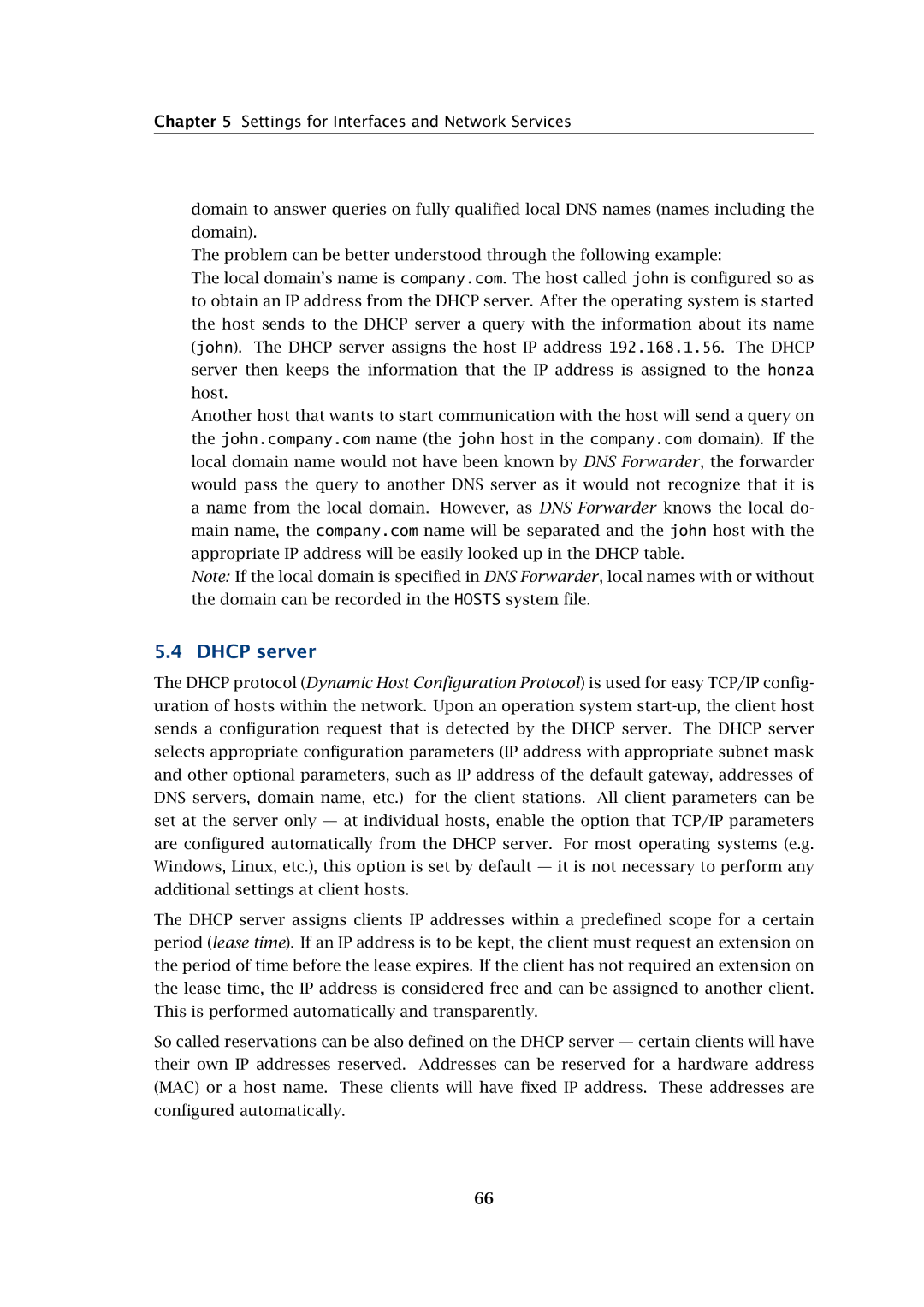Chapter 5 Settings for Interfaces and Network Services
domain to answer queries on fully qualified local DNS names (names including the domain).
The problem can be better understood through the following example:
The local domain’s name is company.com. The host called john is configured so as to obtain an IP address from the DHCP server. After the operating system is started the host sends to the DHCP server a query with the information about its name (john). The DHCP server assigns the host IP address 192.168.1.56. The DHCP server then keeps the information that the IP address is assigned to the honza host.
Another host that wants to start communication with the host will send a query on the john.company.com name (the john host in the company.com domain). If the local domain name would not have been known by DNS Forwarder, the forwarder would pass the query to another DNS server as it would not recognize that it is a name from the local domain. However, as DNS Forwarder knows the local do- main name, the company.com name will be separated and the john host with the appropriate IP address will be easily looked up in the DHCP table.
Note: If the local domain is specified in DNS Forwarder, local names with or without the domain can be recorded in the HOSTS system file.
5.4 DHCP server
The DHCP protocol (Dynamic Host Configuration Protocol) is used for easy TCP/IP config- uration of hosts within the network. Upon an operation system
The DHCP server assigns clients IP addresses within a predefined scope for a certain period (lease time). If an IP address is to be kept, the client must request an extension on the period of time before the lease expires. If the client has not required an extension on the lease time, the IP address is considered free and can be assigned to another client. This is performed automatically and transparently.
So called reservations can be also defined on the DHCP server — certain clients will have their own IP addresses reserved. Addresses can be reserved for a hardware address (MAC) or a host name. These clients will have fixed IP address. These addresses are configured automatically.
66
